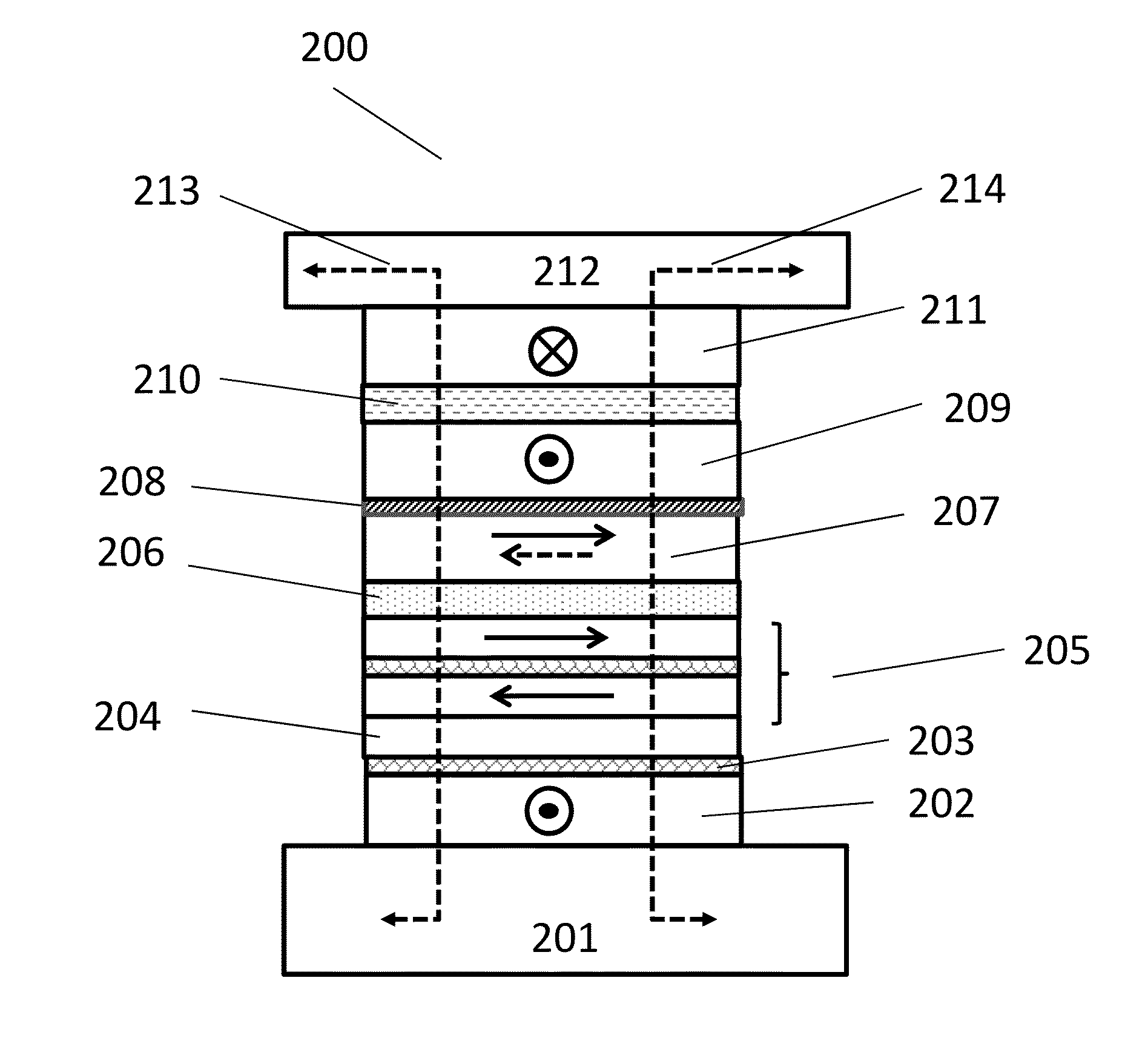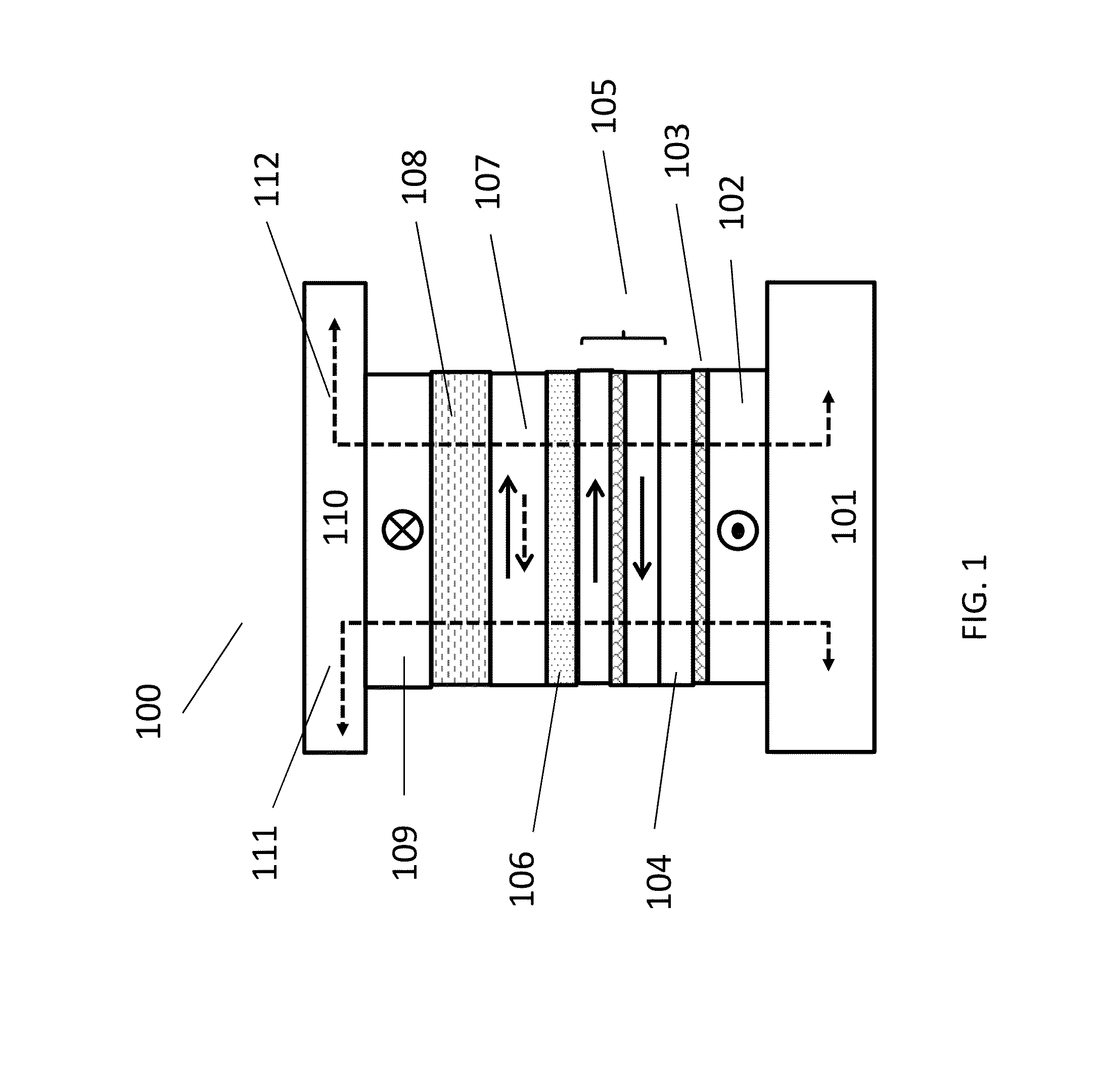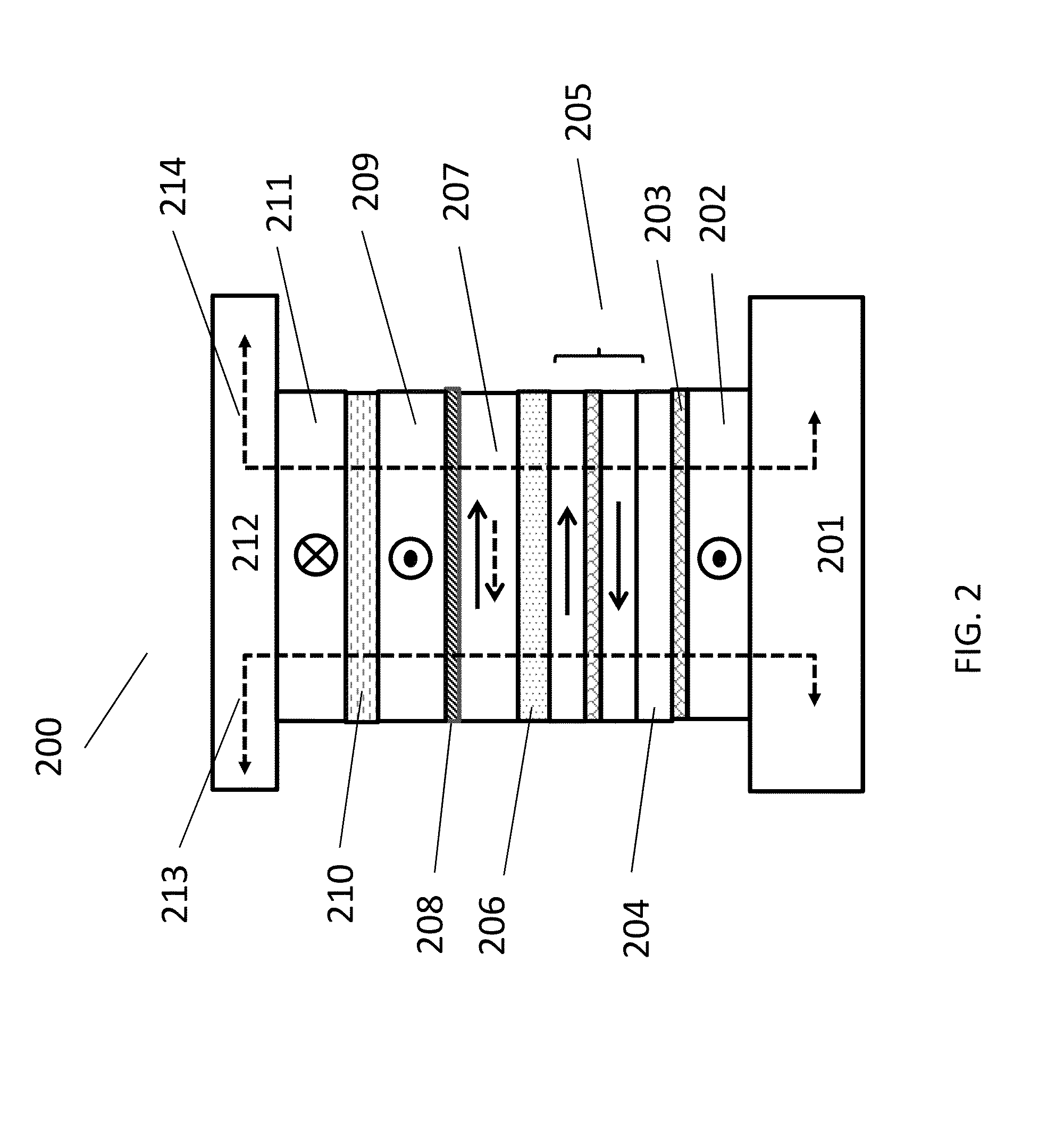Magnetoresistive random access memory cell design
a random access and memory cell technology, applied in the field of memory cell design, can solve the problems of slow write through the read, loss of information stored, and limited endurance of flash memory writing cycle, and achieve the effect of enhancing thermal stability and low switching curren
- Summary
- Abstract
- Description
- Claims
- Application Information
AI Technical Summary
Benefits of technology
Problems solved by technology
Method used
Image
Examples
Embodiment Construction
[0029]The following description is provided in the context of particular designs, applications and the details, to enable any person skilled in the art to make and use the invention. However, for those skilled in the art, it is apparent that various modifications to the embodiments shown can be practiced with the generic principles defined here, and without departing the spirit and scope of this invention. Thus, the present invention is not intended to be limited to the embodiments shown, but is to be accorded the widest scope consistent with the principles, features and teachings disclosed here.
[0030]With reference of the FIG. 1 shows an embodiment of proposed magnetic memory cell 100. The proposed MRAM memory cell 100, counted from the material growth plane from the bottom, comprises a bottom electrode 101; in-plane-anisotropy magnetic stabilization layer 102 with fixed magnetization orientation; an non-magnetic metallic layer 103; antiferromagnetic layer 104 such as IrMn; synthet...
PUM
 Login to View More
Login to View More Abstract
Description
Claims
Application Information
 Login to View More
Login to View More - R&D
- Intellectual Property
- Life Sciences
- Materials
- Tech Scout
- Unparalleled Data Quality
- Higher Quality Content
- 60% Fewer Hallucinations
Browse by: Latest US Patents, China's latest patents, Technical Efficacy Thesaurus, Application Domain, Technology Topic, Popular Technical Reports.
© 2025 PatSnap. All rights reserved.Legal|Privacy policy|Modern Slavery Act Transparency Statement|Sitemap|About US| Contact US: help@patsnap.com



